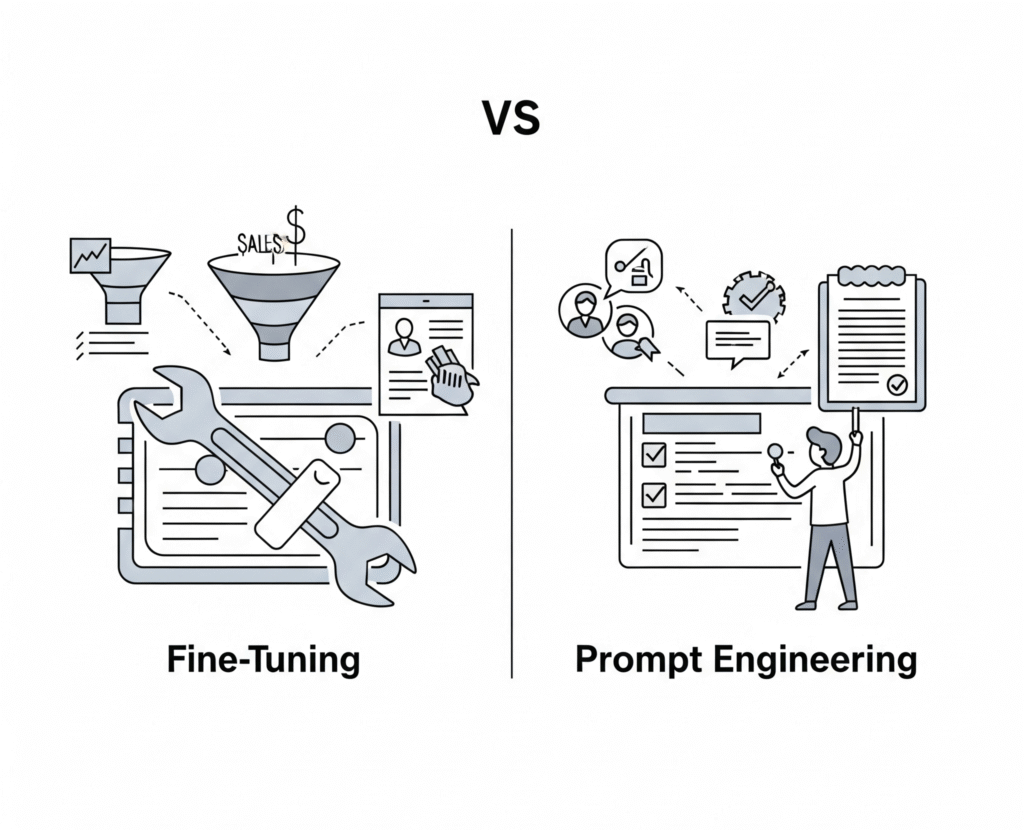
In today’s fast-evolving tech landscape, artificial intelligence (AI) is becoming a key driver of business success. If you’re considering leveraging AI for your company, two terms you’ll often hear are fine-tuning and prompt engineering. Both can help customize AI models like ChatGPT to better serve your business needs, but they work in different ways. Understanding these differences can help you choose the right approach.
What Is Fine-Tuning?
Fine-tuning is the process of training a pre-built AI model on your own specific data. Think of it like teaching an AI assistant your company’s unique language, products, or customer preferences. This allows the AI to give more accurate and tailored responses based on your business context.
For example, if you run a legal firm, fine-tuning can train the AI on legal documents and jargon, so it understands and responds better to legal queries.
What Is Prompt Engineering?
Prompt engineering doesn’t change the AI model itself. Instead, it focuses on crafting the right inputs or “prompts” to guide the AI’s responses. It’s like asking questions in a very clear, specific way to get better answers.
For instance, instead of saying, “Tell me about customer service,” you might say, “List three ways our support team can improve response time.” Prompt engineering uses well-designed instructions to get the most useful output without needing to retrain the AI.
Which One Should Your Business Choose?
- Choose Fine-Tuning if:
- Your business has a large amount of specialized data.
- You need highly customized responses specific to your industry or products.
- You want the AI to understand detailed context that general models might miss.
- Choose Prompt Engineering if:
- You want quick, cost-effective improvements without heavy technical work.
- Your use cases are varied and don’t require deep customization.
- You want flexibility to adapt prompts for different tasks on the fly.
What About Costs and Time?
Fine-tuning usually takes more time and resources because it involves training the AI with your data. It also requires expertise and ongoing updates as your business changes.
Prompt engineering, on the other hand, can be faster to implement and more affordable. It relies on creativity and knowledge of how to interact with the AI but doesn’t require technical retraining.
Final Thoughts
Both fine-tuning and prompt engineering have their place depending on your business goals and resources. If you’re looking for deep, tailored AI capabilities and have the data to support it, fine-tuning is a powerful option. But if you need flexibility, speed, and lower costs, prompt engineering can deliver significant value without complex setup.
At S3B Global, we help businesses navigate these options to find the best AI solutions tailored to their needs. Ready to explore how AI can transform your business? Contact us today!
